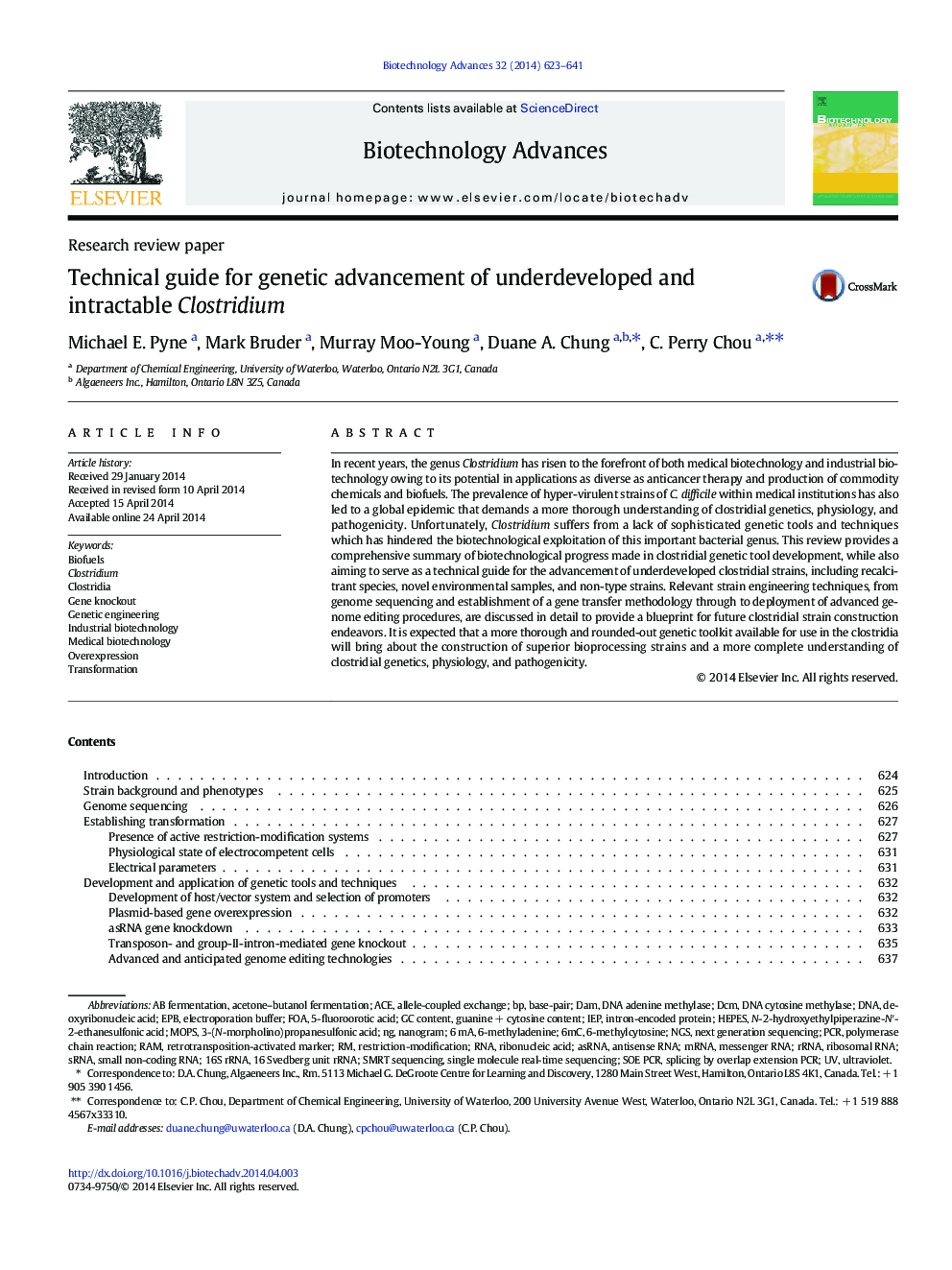| Article ID | Journal | Published Year | Pages | File Type |
|---|---|---|---|---|
| 10231543 | Biotechnology Advances | 2014 | 19 Pages |
Abstract
In recent years, the genus Clostridium has risen to the forefront of both medical biotechnology and industrial biotechnology owing to its potential in applications as diverse as anticancer therapy and production of commodity chemicals and biofuels. The prevalence of hyper-virulent strains of C. difficile within medical institutions has also led to a global epidemic that demands a more thorough understanding of clostridial genetics, physiology, and pathogenicity. Unfortunately, Clostridium suffers from a lack of sophisticated genetic tools and techniques which has hindered the biotechnological exploitation of this important bacterial genus. This review provides a comprehensive summary of biotechnological progress made in clostridial genetic tool development, while also aiming to serve as a technical guide for the advancement of underdeveloped clostridial strains, including recalcitrant species, novel environmental samples, and non-type strains. Relevant strain engineering techniques, from genome sequencing and establishment of a gene transfer methodology through to deployment of advanced genome editing procedures, are discussed in detail to provide a blueprint for future clostridial strain construction endeavors. It is expected that a more thorough and rounded-out genetic toolkit available for use in the clostridia will bring about the construction of superior bioprocessing strains and a more complete understanding of clostridial genetics, physiology, and pathogenicity.
Keywords
DCMIEPACEasRNADNA adenine methylaseMOPSFOANGS16S rRNAmRNAHEPESSOE PCRIntron-encoded proteinEPBrRNASMRT sequencing6-methyladenine3-(N-morpholino)propanesulfonic acidDNAN-2-hydroxyethylpiperazine-N′-2-ethanesulfonic acidmessenger RNARibosomal RNAAntisense RNAsmall non-coding RNA5-fluoroorotic aciddeoxyribonucleic acidribonucleic acidRNAUltravioletOverexpressionIndustrial biotechnologyNext generation sequencingSingle molecule real-time sequencingTransformationRamDamSRNABiofuelsGC contentRestriction-modificationGenetic engineeringGene knockoutnanogrampolymerase chain reactionPCRbase-pairClostridiaClostridium
Related Topics
Physical Sciences and Engineering
Chemical Engineering
Bioengineering
Authors
Michael E. Pyne, Mark Bruder, Murray Moo-Young, Duane A. Chung, C. Perry Chou,
